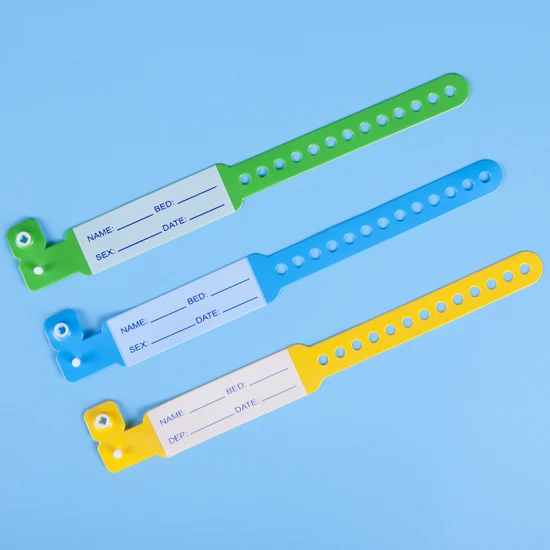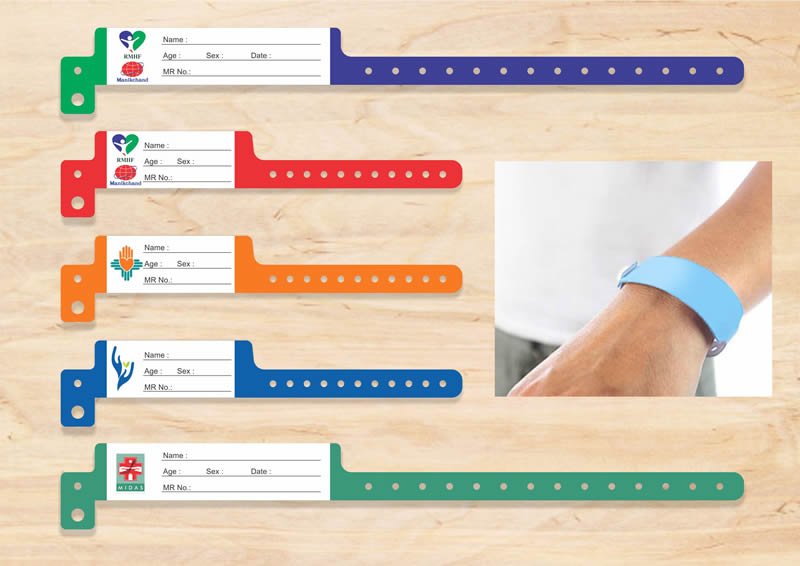A Comprehensive Overview to Patient Identification Band as a Vital Medical Supply
In the vast landscape of medical care, Patient Identification bands have arised as a crucial tool (patient identification band). These bands, brimming with important information, function as the initial line of protection versus medical mistakes and guarantee seamless Patient care. As we start to discover these clinical materials extensive, we discover the complexities of their style, usage, and effect on Patient safety, while hinting at the assurance they hold for future medical techniques
The Role of Patient Identification Bands in Health Care
The value of Patient Identification bands in medical care can not be overemphasized. These easy wristbands serve as the primary technique of ensuring Patient identification, decreasing the threat of medical mistakes and enhancing total Patient security. Patient Identification bands supply a system of checks and balances, a fail-safe versus potential errors, and a consistent pointer of the private behind the therapy.
Decoding the Info on Patient Identification Bands
While they might appear easy at a glance, Patient Identification bands bring vital details that can significantly influence the course of a person's care. These bands frequently display the Patient's name, day of birth, and an one-of-a-kind identifier, such as a medical record number. These essential pieces of information guarantee correct Patient Identification, protecting against clinical mistakes. Some bands may additionally consist of vital clinical informs, such as allergy information, which can be vital in protecting against negative responses. Furthermore, the barcode discovered on these bands can be checked to access the Patient's digital wellness document, providing a riches of info to health care carriers. Comprehending the information on these bands is crucial for effective and safe Patient care.
Various Sorts Of Patient Identification Bands: A Closer Appearance
In the world of Patient Identification, there are several kinds of bands that serve distinctive purposes. Barcode Identification Bands, RFID Tag-based Bands, and Color-Coded Patient Bands are the primary classifications - patient identification band. Each type provides unique attributes and benefits, which will be examined in the adhering to sections
Barcode Identification Bands
Using a considerable renovation in Patient safety, barcode Identification bands have become an important tool in the clinical area. These bands store vital Patient information in a barcode style that's promptly available with a scan. This lowers the opportunity of human error in Patient Identification and data access, which is important in clinical treatments. The barcode system makes details like Patient name, case history, allergic reactions, and suggested medications readily offered. This guarantees fast and right Patient Identification, especially in emergency situation circumstances where every second counts. Barcode Identification bands are additionally simple to use, durable and cost-effective, making them a crucial part of modern healthcare. Notably, these bands have significantly reduced medical mistakes and boosted Patient security.
RFID Tag-based Bands
An additional ingenious strategy in Patient Identification is the usage of RFID Tag-based bands. These bands make use of Radio Regularity Identification (RFID) modern technology to provide a secure form of Patient Identification. Unlike barcodes, RFID tags can save far more information and can be read without direct line of vision. This indicates that medical care experts can access vital Patient information, also if the band is obscured by clothing or bed linens. Additionally, RFID tags can be reprogrammed with updated information as needed, boosting their performance. These bands can be extra expensive than other types of Identification, and there are privacy worries connected with the usage of RFID technology. In spite of these obstacles, RFID tags provide substantial capacity for improving Patient safety and efficiency in medical care.
Color-Coded Patient Bands
Color-coded Patient bands stand as a basic yet effective tool in Patient Identification. These bands, extensive in hospitals and facilities, make use of various shades to suggest numerous Patient risks, conditions or allergies, ensuring instant acknowledgment by health care specialists. Thus, the color-coded Patient band system is an essential part of Patient security and effective health care delivery.

Use of Patient Identification Bands: Procedures and procedures
In health care settings, the usage of Patient Identification bands plays a critical role in making certain Patient safety and security and reducing clinical mistakes. These bands, usually constructed from durable, hypoallergenic material, are connected to the Patient's wrist or ankle joint, presenting essential info such as name, day of birth, and an unique identifier. The procedure is generally carried out throughout admission, with the info double-checked for precision. For babies, bands are attached to both the baby and mommy to avoid mismatches. In senior treatment, two bands might be used for people with dementia to guarantee appropriate Identification. Following these procedures helps to avoid Patient misidentification, a forerunner to click for more serious clinical mistakes. This method is a testimony to the essential nature of Identification bands in Patient treatment.
The Effect of Identification Bands on Patient Safety And Security
Identification bands play a vital duty in maintaining Patient safety and security in healthcare setups. Their use can substantially minimize clinical mistakes by ensuring that the appropriate Patient receives the correct therapy. Furthermore, these basic tools add to enhancing the top quality of care by offering an added layer of verification to Patient identities.
Minimizing Medical Errors
Patient Identification bands have actually arised as a very useful device in considerably decreasing these errors. Crucially, these bands make certain that every Patient is properly matched with their clinical records, examinations, and therapies, thus substantially minimizing the risk of clinical mistakes. By making sure precise Patient Identification, these bands contribute to boosted Patient security, building trust fund and self-confidence in the medical care system.
Making Sure Proper Therapy
Protecting Patient safety, Identification bands play a critical duty in ensuring the correct management of treatments. They use a simple yet efficient technique for correctly determining individuals and matching them to their medical records. This decreases the risk of therapy mistakes, specifically in high-pressure scenarios where blunders can have serious effects. These bands include crucial details such as the Patient's name, day of birth, and distinct Identification number. They promote accurate cross-referencing with digital health records, prescription orders, and step-by-step schedules. In repercussion, the opportunity of misdiagnosis, medication errors, or step-by-step mix-ups is substantially minimized. Essentially, Patient Identification bands offer as an essential protect in visit the health care setup, significantly adding to Patient safety and security and guaranteeing appropriate therapy.

Enhancing Quality Treatment
While they may show up insignificant, patient Identification bands significantly improve the quality of care offered in healthcare settings. They are an important device in making sure Patient security due to their capability to supply prompt access to crucial details. The adoption of Patient Identification bands is, therefore, a needed step in all healthcare settings.
Discovering the Future of Patient Identification Bands in Clinical Technique

Conclusion
Patient Identification bands play a crucial role in health care, making sure exact Patient Identification and minimizing medical errors. These important devices raise security and offer instant accessibility to vital wellness data. The combination of electronic and biometric technologies could additionally improve Patient security, care high quality, and privacy. As clinical practices remain to evolve, Patient Identification bands will certainly continue to be a vital component of the medical care system.
While they might seem straightforward at a glance, Patient Identification bands bring vital details that can substantially impact the training course of an individual's treatment.Color-coded Patient bands stand as a simple yet effective tool in Patient Identification.In healthcare setups, the use of Patient Identification bands plays a crucial duty in guaranteeing Patient security and reducing medical errors. In significance, Patient Identification bands offer as a critical secure in the medical care setup, considerably contributing to Patient safety and making sure appropriate treatment.
Patient Identification bands play an essential function in health care, making certain precise Patient Identification and minimizing clinical errors.